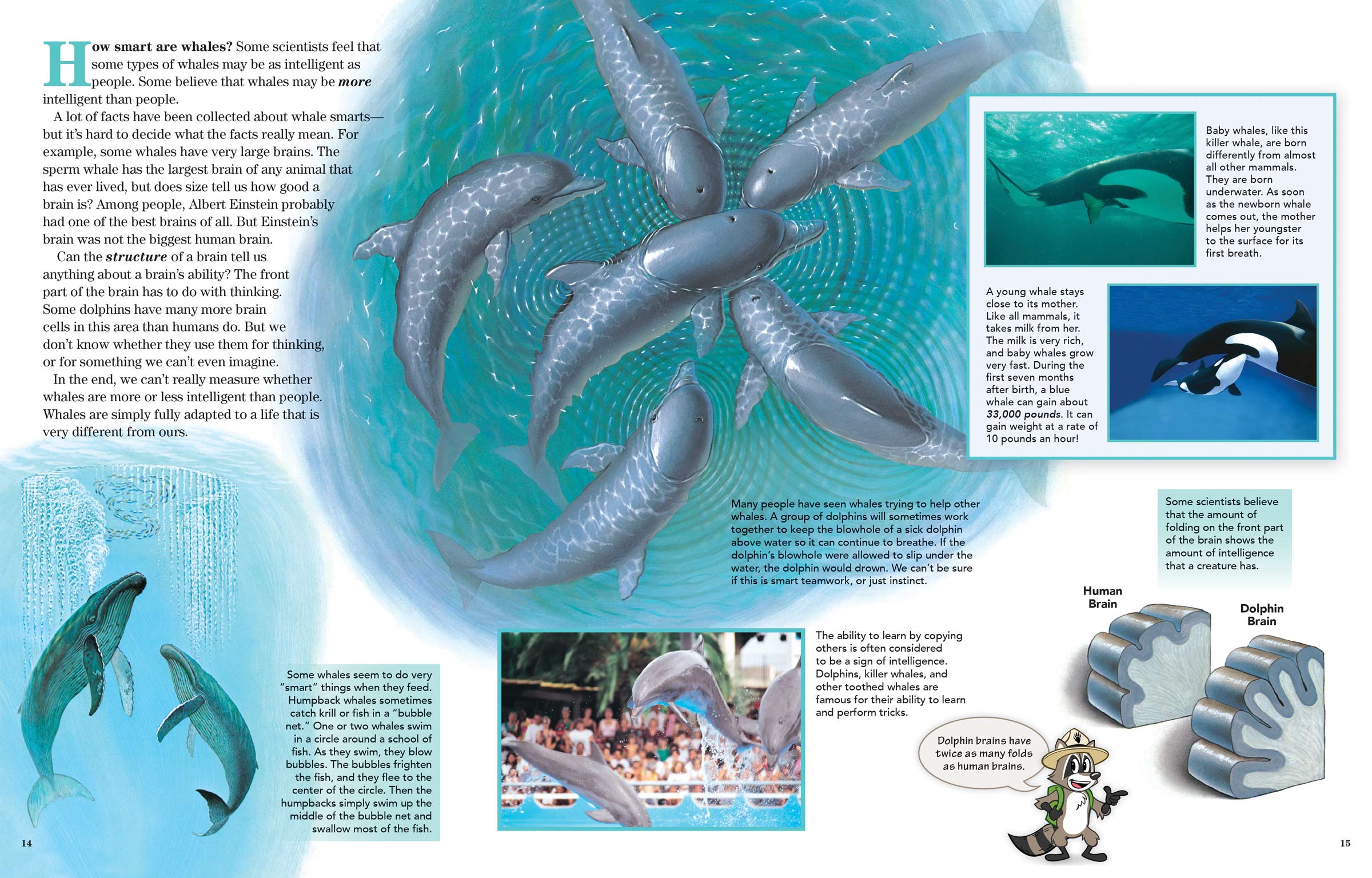
How Smart Are Whales?
ByHow smart are whales? Some scientists feel that some types of whales may be as intelligent as people. Some believe that whales may be more intelligent than people.
A lot of facts have been collected about whale smarts—but it’s hard to decide what the facts really mean. For example, some whales have very large brains. The sperm whale has the largest brain of any animal that has ever lived, but does size tell us how good a brain is? Among people, Albert Einstein probably had one of the best brains of all. But Einstein’s brain was not the biggest human brain.
Can the structure of a brain tell us anything about a brain’s ability? The front part of the brain has to do with thinking. Some dolphins have many more brain cells in this area than humans do. But we don’t know whether they use them for thinking, or for something we can’t even imagine.
In the end, we can’t really measure whether whales are more or less intelligent than people. Whales are simply fully adapted to a life that is very different from ours.
Some whales seem to do very “smart” things when they feed. Humpback whales sometimes catch krill or fish in a “bubble net.” One or two whales swim in a circle around a school of fish. As they swim, they blow bubbles. The bubbles frighten the fish, and they flee to the center of the circle. Then the humpbacks simply swim up the middle of the bubble net and swallow most of the fish.
Baby whales, like this killer whale, are born differently from almost all other mammals. They are born underwater. As soon as the newborn whale comes out, the mother helps her youngster to the surface for its first breath.
A young whale stays close to its mother. Like all mammals, it takes milk from her. The milk is very rich, and baby whales grow very fast. During the first seven months after birth, a blue whale can gain about 33,000 pounds. It can gain weight at a rate of 10 pounds an hour!
Many people have seen whales trying to help other whales. A group of dolphins will sometimes work together to keep the blowhole of a sick dolphin above water so it can continue to breathe. If the dolphin’s blowhole were allowed to slip under the water, the dolphin would drown. We can’t be sure if this is smart teamwork, or just instinct.
The ability to learn by copying others is often considered to be a sign of intelligence. Dolphins, killer whales, and other toothed whales are famous for their ability to learn and perform tricks.
 Some scientists believe that the amount of folding on the front part of the brain shows the amount of intelligence that a creature has. Dolphins have twice as many folds as people.
Some scientists believe that the amount of folding on the front part of the brain shows the amount of intelligence that a creature has. Dolphins have twice as many folds as people.

